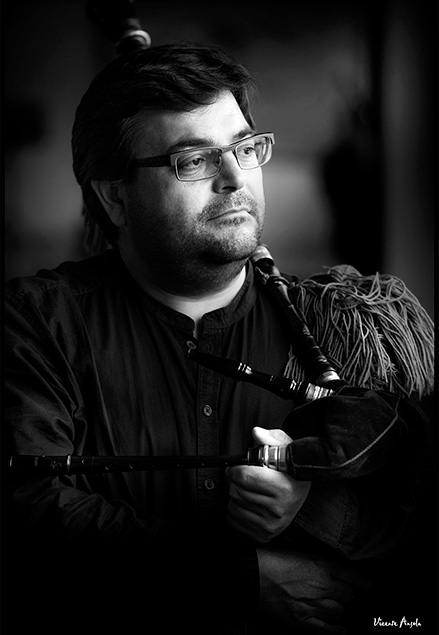- Inicio •
- Obradoiro •
- Testimonies •
Testimonies
A special and personal relationship is created between a bagpiper and his instrument. These are some of the experiences which some bagpipers, whose references are included below, have felt through their use of gaitas from the Obradoiro de Gaitas Seivane.
“Works of art, unsurpassed instruments, stability and precision in tuning, reliability, the gaita has in Seivane their hallmark, their own sound, or their unmistakable sound, a harmonious quality which is moving and creates emotion capable of tuning with any another musical instrument, exquisiteness and guarantee, the galeguity of the instrument, the best gaita makers, Seivane has a lifetime guarantee, they have the tune of the country, the Seivane are part of the history of Galicia”.
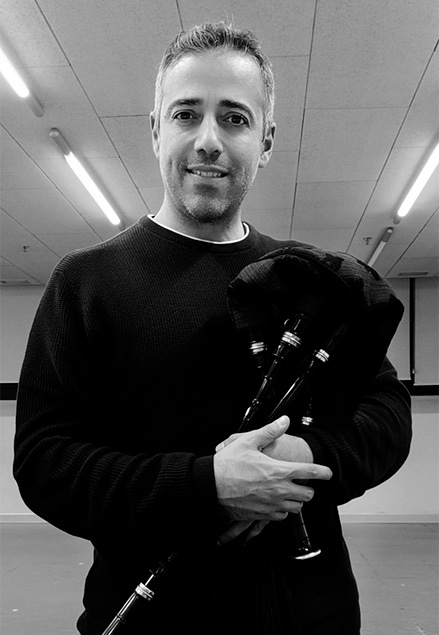
Gonzalo abelairas
Gaiteiro and traditional music teacher at the Ourense Traditional Folklore Association (AOFT) and at Traditional Music School from Ourense.
From my first contact with traditional music, in the room of traditional music «Gomes Mouro» from Ourense, I have fixed to the memory the sound of a boxwood gaita, of then who was one of my teachers of gaita and now he is a quartet companion. That Seivane boxwood gaita and its tone, was what marked me in order to find a sonority in my instrument.
One of the things I like more of Seivane gaitas, is that they contribute a lot to the piper or interpreter of nowadays, when the gaita is taking a multitude of ways. As in different formations, soloists, quartets… in the interpretation of pieces «cults» denominated by making camera music, in new repertoires or in a more contemporary section. In all of them it is needed a versatile instrument, capable of adapting to different fingerings in order to achieve mainly, the stability and precision in the tuning that these instruments get.
As a soloist piper, I love touching and playing with different tuned drones. These gaitas get a great filling and stability thanks to the research work behind, by emphasizing the quality of the tone and the sweetness of its sound.
I want to thank the Seivane family, first personally, because since I met them, their treatment was amazing and musically thanks for providing these instruments, and continuing to evolve and solve the interests and demands of pipers.
For all that, thank you very much!
David Bellas García
A virtuoso Galician musician and professor at the Viveiro Professional Conservatory of Music and the Foz Music School. Many of his works are required syllabuses in the main Galician conservatories.
Everything began for me in 1995, when I decided to sign up for a gaita group in O Barqueiro, at the hands of teacher Xan Barcón. He taught me to have passion for the instrument and about everything associated with the job of a bagpiper. He made me aware of the existence of the Seivane family who, from that moment, changed my commitment for said instrument, progressively making it stronger.
I remember it, as if it were today, when the gaita tuned in C and made of granadilla arrived and discovered everything that a Seivane gaita hides in its interior, apart from a very good quality of sound and excellent tuning, that sound of the homeland, that sophistication that the old bagpipers had and which has been handed down from generation to generation, you see it is a box of memories, a blank piece of paper that each of us has a responsibility to fill.
Another moment that I will always fondly remember, was the day I went to the workshop to meet the Seivane family. I felt so nervous when they said “Play something, son”! My legs still tremble at the memory, but the truth is, since then, every time I go there and they give me the opportunity to play something, my chest fills with pride.
In my experience, up until now, a Seivane gaita has never let me down, neither in ‘foliadas’ or fiestas, nor in auditoriums or concert halls, whether playing next to a traditional drum, a piano or an electric guitar. I am pleased to see the progress made with this instrument in such a short space of time, which is mainly thanks to the Seivane family.
Nowadays I have a gaita tuned in C, D and B Flat, made from granadilla, and another one made from boxwood, which work really well and add a special sophistication to any piece which can be played on a gaita, whether it is the most traditional piece or some of the more contemporary pieces.
To finish, I would like to return to a memory I have every morning when I get up and go to rehearse. Something I have heard Mr Xosé Seivane say: “One day, the gaita spoke and said ‘Clean me, tune me well at home and I am sure to make you look good in the square”.
Thank you for your gaitas and for being as you are to everyone: Xosé, Álvaro, Xosé junior, Susana and all the people who work there, so that the sound of the Seivane gaitas never disappears.
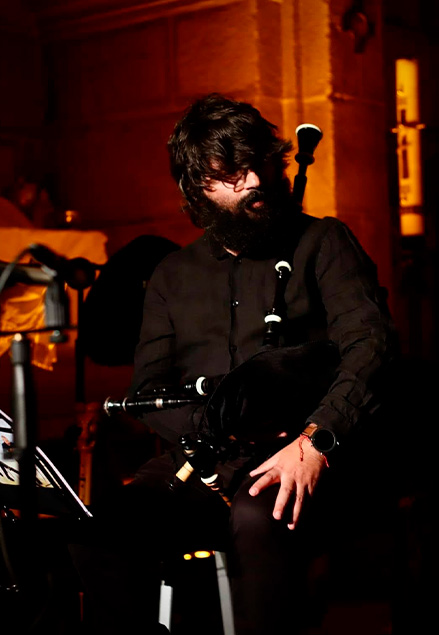
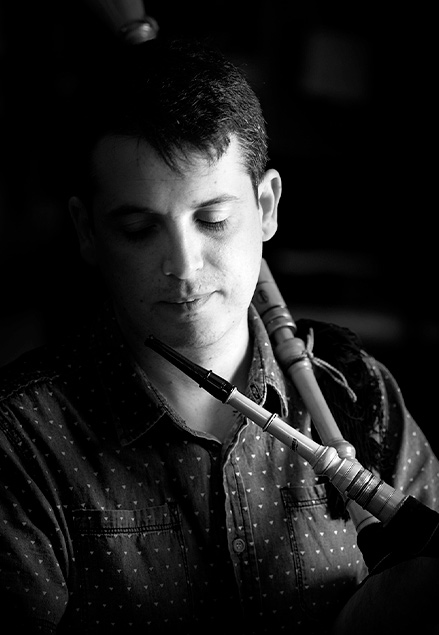
Dani Bellón
One of most awarded gaiteiros in history, he holds the 2003 Macallan Trophy, winner of three editions of the Constantino Bellón Competition and four of the Avelino Cachafeiro Competition, among others. Musician and gaita teacher at the BellónMaceiras Music School in Fene.
When one is eleven years old, one does not really value things, despite what they may have. That was my case, when one afternoon in March, around 1996, I went to collect my first gaita.
As time has gone by I have been learning about what I really had in my hands. I soon realised that the gaita was made from more than just wood, as this could easily be heard through its unmistakable sound. One starts worrying about more than just simply playing a song. In my case, the latter fully combined playing technique with robust tuning.
Thanks to people like the Seivane family and their dedication to the gaita, all these doubts that we have as bagpipers are fully addressed.
RAFAEL CARRACEDO CRESPO
Graduated with honors from the Royal Conservatory of Music of Madrid. Trumpeter of the Unidad de Música de la Guardia Real. As a bagpiper, he is the winner of the 2022 Tui Bagpipe and Drum Competition and a winner of the MacCrimmon Trophy in Lorient, where he was runner-up in 2023.
In August 2003, I went with my parents to see the Soutelo de Montes – Forcarei Soloist Bagpiper competition. That day changed my life, after listening to Edelmiro Fernández and Daniel Bellón (among others) play, I understood that the bagpipe was a unique, complex, versatile instrument whose timbre captured me forever. It was above all that sound, that of their Seivane bagpipes, and that precise tuning, something that I had never had the opportunity to hear at those levels of mastery.
The following year, I was able to save enough to buy a chanter in C from boxwood, hand-carved by Xosé Seivane, a jewel that has continued to accompany me since then. 20 years later, today I have among all my instruments, a granadillo bagpipe in C plus seven Seivane chanters in keys between low G and high D. Each one has a way of speaking, feeling and expressing in a genuine way, however they all have in common that impeccable workmanship that any piece (whether it be a chanter, a blowpipe or cover bag) that comes out of the Obradoiro Seivane has.
I am extremely lucky to be able to play the gaita on numerous occasions with the Unidad de Música de la Guardia Real, my bagpipe is a Seivane with the Seitor system, a guarantee of a reliable and precise tool to perform my role in the most satisfactory way.
To be honest, it would be unthinkable to understand the history of the bagpipe without Obradoiro Seivane.


Nando Casal
Prestigious gaiteiro of the celebrated folk music group Milladoiro.
When we speak about the re-emergence of traditional Galician music, we mostly give credit solely to the performers, forgetting the importance of those who manage it, the craftsmen, whose work has risen to the occasion and has constantly enhanced their instruments, especially the gaita. Without the craftsmen, such a resurgence would not be possible. If there is a gaita workshop, here in Galicia, whose work we should recognise, it is the workshop belonging to the Seivane family.
Leonardo Da Vinci, the brilliant artist of the Renaissance period, used to say: “Where the spirit does not work with the hand, there is no art”. I think that this quote is appropriate when defining in one sentence the work done by these magnificent craftsmen, the Seivane family; the bagpipes made by their hands are genuine works of art that, because of their sonority, become the fitting instrument for bagpipers to express the soul and spirit of our people, through the universal language of music.
Visiting the Obradoiro de Gaitas Seivane is always a great joy. You can have the pleasure of holding a conversation with the old and wise craftsman José, continue with the slow and confident talk of his sons, until you finish with an exquisite and virtuous performance from his granddaughter and bagpiper Susana.
alberto coya
MacCrimmon 2009 Winner, renowned gaiteiro and gaita teacher.
I would like to express my gratitude to the Obradoiro de Gaitas Seivane because, thanks to its passion for the gaita, it succeeds in combining the past, the present and the future of an instrument that means rather more than just that: it is the musical essence of a culture, of a people.
Three generations dedicated to tradition but also allied with necessary development and with constant improvement. This is how the workshop can offer a wide variety of instruments of professional quality to which it adds a range of accessories that that maximize their performance, allow them to be personalized and lead to the creation of unique pieces.
Without any doubt, Seivane bagpipes are one of the best possible choices both for practised performers and for those who are starting out on their musical journey.
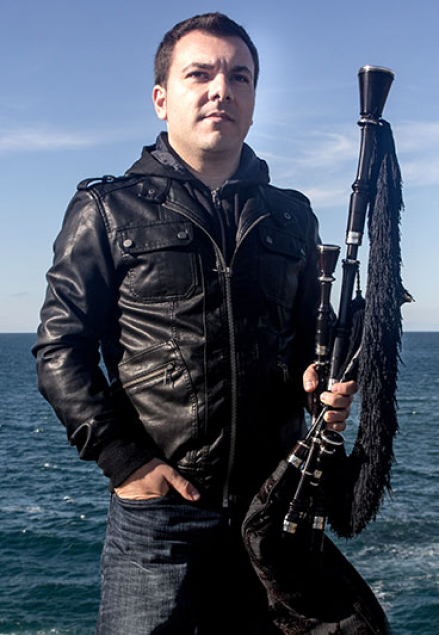
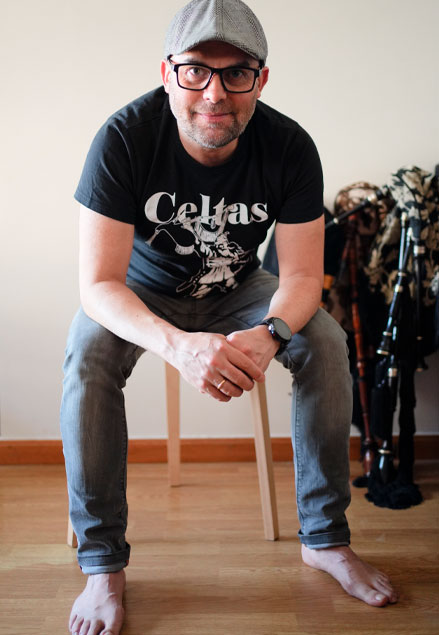
Antón Davila
Bagpiper and flutist in Celtas Cortos, teacher, audiovisual creator, composer and editor of soundtracks, documentaries and films.
I started playing the bagpipes when I was 6 or 7 years old, but it wasn’t until the first “Seivane” came home that I realized that I had a real bagpipe in my hands, compared to the one I had. There was such a difference in terms of tuning, timbre, appearance and finishes… that there was no turning back. From that moment, my life changed. I felt it clearly the same day that my first beauty arrived: it was a bagpipe in C, from Lignum Vitae, with a black methacrylate ring, made by Álvaro in the workshop he had when he was living in Barcelona.
In February 1996 I met them all in person, at the Cambre workshop: from the patriarch Mr. Xosé to his sons Álvaro and Xosé, Susana and Saínza, and the entire team. Since then I have been adding new bagpipes to my collection, such as the one in D, another one in C, the one in Bb, A, etc. and I was growing and adapting to the constant evolutions that were emerging in the workshop, such as the step for the kid bag, then the Goretex bag, the Seitor, the Seipal, or any tonality that I needed for the recording. Without a doubt as a professional musician, the Seivane bagpipes made my life much more precise and easier. Until today, caring for and nurturing a friendship, of which I am very proud.
pablo devigo
Interdisciplinary musician, composer and international orchestra conductor.
What does Seivane brings to me? As a result of the eclectic vision in the manufacture of the instrument, emerges one of the cornerstones that the Obradoiro shows off: their accuracy. This is true in all aspects of the process from the beginning, when the wood is picked up, to the perfect finish. This, to me as a performer, is an indispensable feature.
This accuracy has an impact on another important point: reliability. The fact that all the pieces on the production line are under control, and nothing is left to chance, makes that all of us can enjoy a stable instrument in terms of pitch and timbre. This is what makes possible playing gaita on less common frameworks so far.
Seivane was always at the centre of the world of gaitas, providing the requirements that the piper needs. This is the way they should go on not forgetting that the race for perfection never ends.
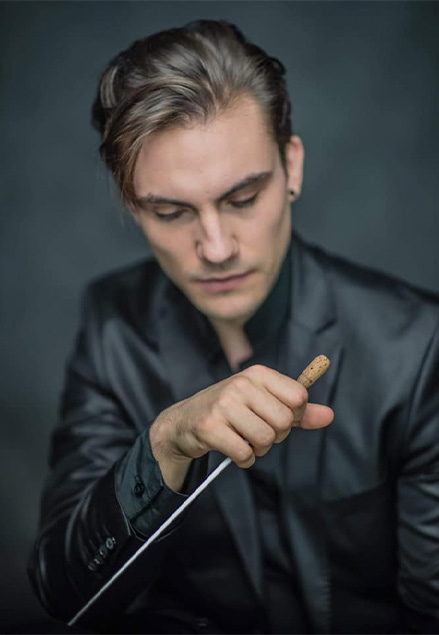
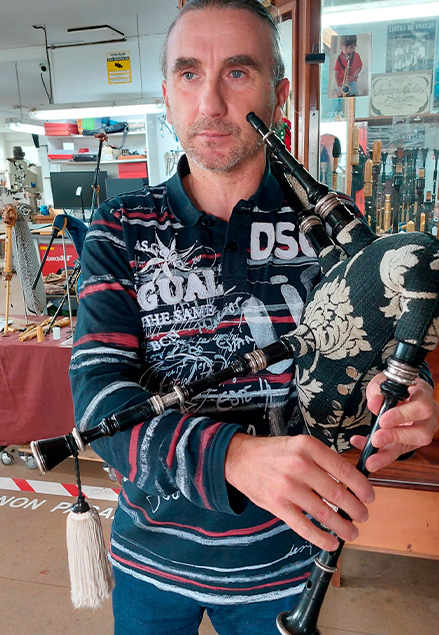
edelmiro fernández
One of the most successful bagpipers in the MacCrimmon competition, of which he was the winner in four editions. He participated in numerous recordings and musical groups, and is a professor of gaitas and traditional percussion at CEIP Bergantiños.
My first interaction with the gaita was at the age of twelve, in the Ribeira Bagpipe School. It is the job of a teacher to take children from the ignorance which any child who is learning has, to sharing the same concerns as him about the gaita (tuning, sonority, execution). A short time afterwards, as a result of many hours of work, my ‘ignorance’ changed into me becoming demanding and this became a way of life for me, both privately and professionally.
Once I knew what my requirements were as a bagpiper, I decided to place an order in 1992, for a chanter tuned in C (made from granadilla) with Seivane (as in the bagpipe school we were already using chanters, tuned in B, made by Seivane), which I used in my first festivals and competitions as a soloist.
These days, I have three Seivane gaitas: tuned in B Flat, C and D (as well as chanters tuned in B and C Sharp), which have provided me with much success and satisfaction and which I used to travel around the world, carrying the sound of the gaita.
A great part of the responsibility for the development of the gaita lies with the Seivane family, who throughout the course of their work as craftsmen, have been able to convey the essence of old gaitas, along with the sonority and tuning which are demanded by the variety of instrumental groups.
I encourage you to keep on working like this.
Pepe Ferreirós
Prestigious gaiteiro of the celebrated folk music group Milladoiro.
I met Xosé Seivane in person in 1978 at one of the meetings that used to be held in Ortigueira and which, much later, would lead to the Association of Galician Bagpipers. It was there that I also met Ricardo Portela; I was able to maintain a magnificent and fruitful relationship with both and, above all else, a deep friendship. It was also then that I began to discover the magic and charm, of the sound emanating from the gaitas that were coming out of the workshop in Ribeira de Piquín.
I will always remember the first visit to his ‘sanctuary’ as a journey of initiation, like a pilgrimage to one’s roots, to the fountains of sound (not far from there, another symbol of the identity of our Nation is born: Father Miño). As with any good ‘romería’ (a kind of religious excursion), the nourishment of the soul is followed by the nourishment of the body and, on this occasion, this was done by some excellent trout caught in the crystal clear water of the rivers in the area, well known by my friend Seivane.
Since then and until today, my dealings with the Seivane Obradoiro, currently with his sons Álvaro and José at the forefront, have been continuous and reciprocal.
I have nothing to say about their gaitas that they do not already say in their unmistakable voice, sweet and vigorous at the same time, unique. I have a personal inclination for their ‘Do Brillante’ (a slightly sharpened C tone), making me think of the deepest essences of the Homeland.
There is no need to say that the Seivane surname is an essential reference for the music in our Nation.
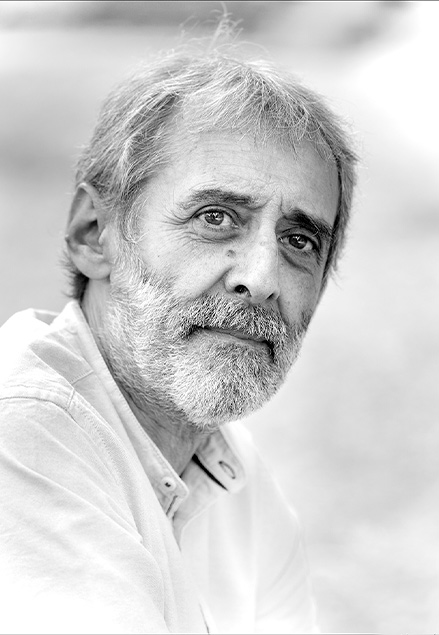
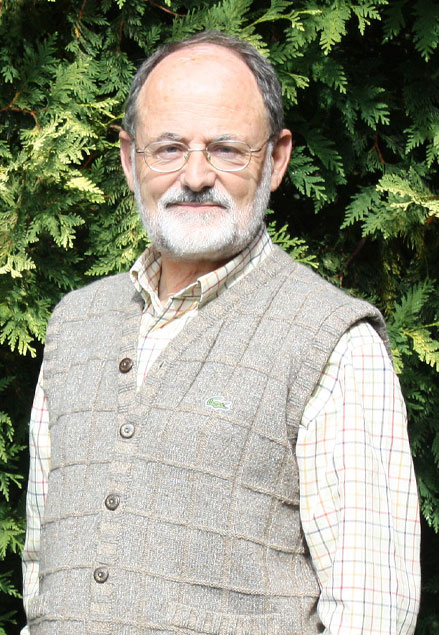
Xesús Ferro Ruibal
Galician professor, researcher, theologian, philologist and writer, with numerous publications. Member of the RAG, when he joined that Corporation, Susana Seivane’s gaita played there. A great communicator, he directed and presented several successful programs on TVG on linguistic issues such as Ben falado! (benfalado.gal)
Seivane is the brand of a high-quality bagpipe, which forever left behind ancestral technical problems of tuning and timbre of the received instrument. Seivane is a bagpipe that put an end to stridency; a bagpipe that achieved perfect tuning and a vibrant but round tone.
A Seivane bagpipe makes an entire Carballeira dance but also makes a symphony orchestra vibrate. A Seivane bagpipe can sing lyrically and can summon us to the epic. A Seivane bagpipe requires a bagpiper of the same quality as it.
How many thousands of muiñeiras and ribeiranas sounded with Seivane’s bagpipes? In how many countries were Seivane bagpipes played? How many girls in how many countries went out to dance to the sound of a Seivane bagpipe? How many fell in love forever with their boy to the sound of a Seivane bagpipe at that moment when the history of the world takes, somewhere, a small step forward? How much emotional value does the sound of a Seivane bagpipe carry? How many problems were put to rest with a Seivane bagpipe? How much is a Seivane bagpipe worth, even if all factors are taken into account?
Seivane is the mark of a high quality bagpipe, which requires a bagpiper of equivalent skill, because it expresses the quality of the affections of this tribe.
Seivane is today one of the most illustrious surnames in Galicia.
Seivane is the Stradivarius of popular and anonymous music from Galicia.
raúl galego
Self-taught gaiteiro with an extensive career, he participated in numerous groups, and taught gaita, percussion and Galician music classes.
In the early 70’s I used to imagine to be a bagpiper, dreaming with gaitas but with no near references on them when, in 1972, my friend and neighbour Roberto helped me to join the mythic Cántigas da Terra, the veteran choir from A Coruña. So, at last, I had the opportunity to touch, see and even blow my own breath into a real gaita. I used to share alboradas and various other tocattas with the mythic groups ‘Os Cinco de Galicia’ or ‘Os Matos’ but always with a borrowed gaita.
Just then, Adolfo Fernández Riopedre, father of Miguel, a pupil of mine from Santa Margarita, told me about a friend that handcrafted nice gaitas and he was going to order one for his son. I asked him about if his friend would be able to make it with a leather bag. Shortly after, the gaita arrived. It had the bag made from leather adjusted by the own artisan. Its sound was clear like the water from a spring. I really liked it. And, for a good price, 5,000 pesetas, I ordered a four voice gaita, with two chanters tuned in B flat and C, and two adaptable drone thirds so I could play in both tonalities. But I warned him to make a good gaita because, if so, he would have much more work than he could do.
It was December, 1974 when I met that nice man, fifty-something years old, with a narrow little moustache and a Tyrolese hat, proud of his work who put in my hands a gaita made from boxwood. It was peculiarly turned and had the rings made from horn.
From then on, Seivane was the gaita sorcerer to me. Twelve years later, I wanted my Top Gaita. Made from granadilla, goat skin bag and, of course, tuned in B flat. It had four voices and the little drone with a chanter reed as traditional gaitas have. My little gaita was sweet and plenty of sound and, although it was designed by myself, it had a traditional inspiration shape enriched by the magic touch of Seivane. My little gaita travelled around the world some times happy, some times sad, playing for fun but for pain as well.
I am very proud of carrying on my shoulder the excellent and traditional brand from Ribeira de Piquín. I am also proud and grateful for that ‘way of making’ of Seivane because they are artisans but art-ists as well.
As the gaita is the identity symbol for our nation, Seivane is the identity symbol for the gaita.
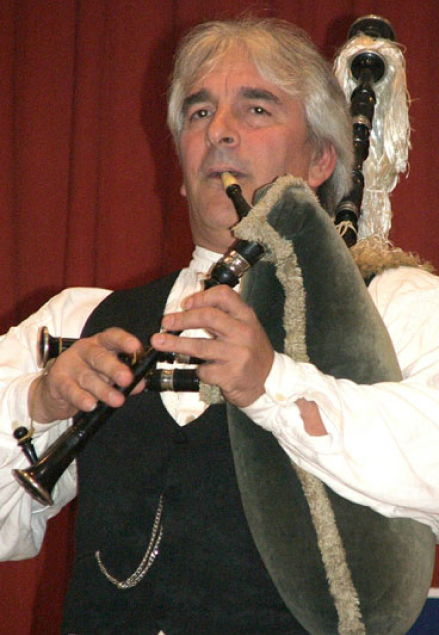
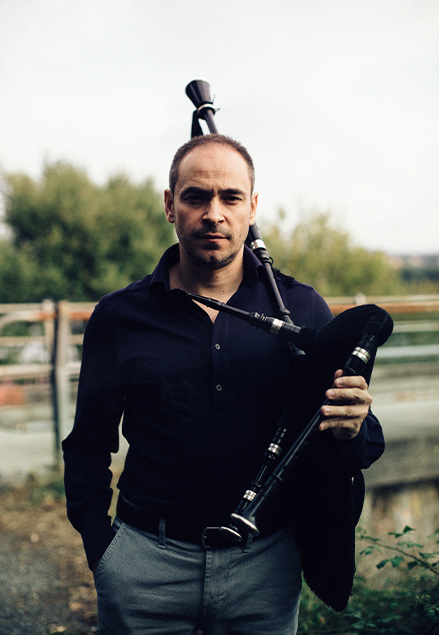
Pedro Lamas
Gaiteiro, saxophonist, arranger and Galician composer. Researcher and teacher, founder and director of reference groups. It has one of the most successful curriculums of traditional music in Galicia.
I met Seivane in late 80’s, when my friends and me ordered our first gaita for the group “Garrulaxe” from Cecebre. That gaita was a treasure for me, even in spite of not having capacity to appreciate the sonorous and constructive qualities defining the instruments made in this factory in Volteiro, closely near to my home.
This proximity made me a privileged person because of the opportunity to go in and out this wonderful place in countless times, being witness, throughout all these years, of its own evolution and also of the instruments made there.
To enter the factory of Seivane is to open a window with views to present, past and future of our instrument. Lots of photographs, chanters, pieces in restoration and new and old gaitas coexist in this temple for any researcher with eagerness to investigate in the historical development of our gaita. There I met many people related to our culture who resort to the great skill of these artists.
Passing of these years demonstrated, in my opinion, two fundamental premises of the factory: the well-taken care and precision whereupon are manufactured all and each one of the parts of the gaita, and the permanent preoccupation to obtain the greater sonorous and timbre quality of them. This matter answers to the restlessness of these craftsmen in the search of new technical and constructive solutions to the service of the new generations: if something defines the Obradoiro de Gaitas Seivane it is its capacity to take care of the preoccupations of all those who love the gaita, achieving new improvements that became throughout all these years and that we can enjoy nowadays.
Company obstinacy on preserving timbre richness of the instrument, with special attention to relationship that comes from the conjunction of all and each one of the sonorous elements that conform it, makes the work of the Seivane family one of the most honest contributions to the Galician Gaita world.
In the name of all the lovers of the folk music and in my own: thanks to spread your art and humanity to our instrument.
Xosé Luis Miguélez
Gaiteiro and saxophonist, he teaches traditional Galician music classes and directs the jazz orchestra of the Ourense Professional Conservatory of Music.
When you are devoted professionally to Galician Gaita, either as a teacher or as a performer, you do appreciate some important and particular details that Seivane’s workshop owns and which transform it into a very special place.
As a teacher of that musical instrument, I need to work with the best possible materials in the smallest possible term. Obradoiro de Gaitas Seivane, bets for the new technologies so this allows you to get impressive quality instruments in a really short term. All this, of course, without loosing the handmade finishing contributed for decades by their brand.
As a performer, I have been using their gaitas for more than twenty years, and what I admire the most on them is their versatility when confronting different musical situations. In my last live recording entitled “Esperanza”, I played one of their instruments in the theme for Gaita and Piano “Luz do Atlántico” by Ernesto Campos. This score drives the gaita to its own limits for tuning and technique, but the final sound result was really good.
This all said, I must, either as professor or as performer, recommend the instruments from Obradoiro de Gaitas Seivane since they are, with no doubt, worth a lot more than they cost.
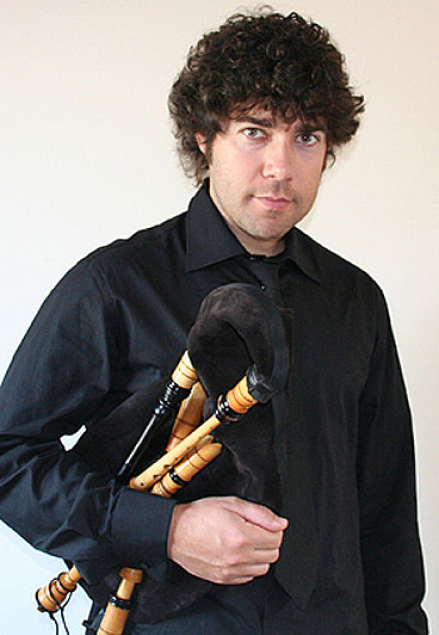
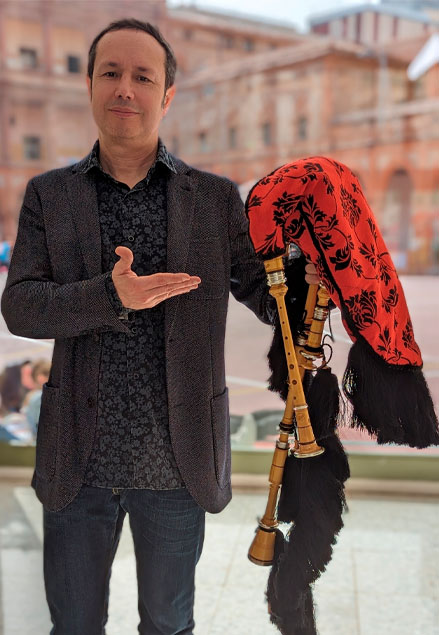
Manoel Muxico
Throughout his career as a performer, was a member and collaborator of various groups and orchestras, both in Galicia and Barcelona. Furthermore, from the 80s to the present, he stands out as a gaita teacher in various music schools in Barcelona.
“How little you need to be happy: the sound of a bagpipe. Without music, life would be a mistake…” At the beginning of one of his aphorisms, Nietzsche raises these couple of questions, which perhaps we should never forget.
From here, I would like to thank all the members of the Obradoiro Seivane for helping us make the sound that produces happiness increasingly pleasant, rounder, more perfect, more… beautiful; and for providing us with instruments that allow us to create that music that makes our lives not simple mistakes.
Finally, I would like to state that, thanks to their constant research, the instruments that come out of the obradoiro are increasingly more versatile, more tuned, more ergonomic… easier to play. For this reason, I always recommend my students use Seivane gaitas in their lessons; since, when you start playing, having a reliable instrument from the beginning makes your initiation as a performer much easier.
Paulo Nogueira
Prestigious gaiteiro of the emblematic Treixadura group and teacher at the CEIP As Covas-Meaño.
Sometimes I start to think about what I would have done with my life if I didn’t play the gaita, if I didn’t keep some sort of link with traditional music… It is incredible to think that making a small decision, such as deciding whether to attend some gaita classes or not, can set out the rest of your life. I think it was like this in my case, as what the future has offered me in my professional life has been, and is, closely related to that decision I took at the age of nine: “I want to learn how to play the gaita”.
Clearly, some time passes until you reach a level of maturity that allows you to decide what it is that you are looking for and what you really want to do. When I was sixteen, I listened to some chanters being used for the first time by ‘Faíscas de Solobeira’ (Chilro and Xocas) and decided that I needed to get hold of a chanter like those (at that time, I couldn’t afford the entire gaita): Full of sonority, shine, sweet, enchanting and they were well tuned!!! I think about all this now, but at the time, I was simply ‘hung up on them’. After some time, I bought the complete gaita. Since then, I have always played with Seivane gaitas.
Following that chanter in C would be one in D, one in B Flat, in D but made for the closed fingering style and A. Lately, I have had my eye on a gaita tuned in a low F which… I am in love with.
At ‘Treixadura’, I am convinced that in addition to the style and sound that we can individually add to the group, a certain percentage of sound that defines and characterises us is the ‘responsibility’ of the Obradoiro de Gaitas Seivane, of which, of course, we feel very proud.
I certainly would not understand my life with the gaita and would not understand the gaita without Seivane. I know that what I am saying is subjective and based upon my own personal tastes and preferences, but if I had to be objective, I would say the same. Anyone who knows the recent history of the gaita and our traditional music has to recognise the role of the Seivane family for their preservation, dispersal, defence of and adjustment to the modern era.
For all this, Seivane(s): Thank you, thank you very much!!
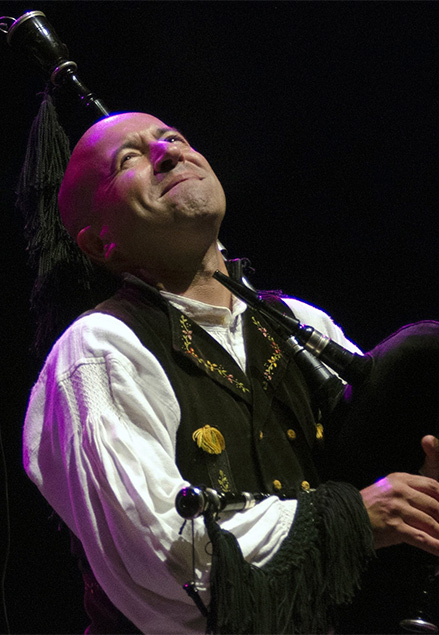
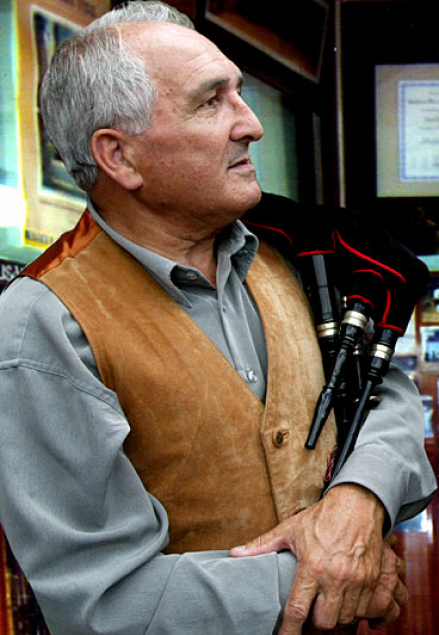
HEnrique Otero Covelo
(1930-2013)
“El gaiteiro de Fragoso”, was the first professor of gaita at the Conservatorio de Vigo. Prolífico composer, historical gaiteiro and master.
As a bagpiper and composer, I want to give my sincere thanks to the Obradoiro Seivane, for the work accomplished in the construction of gaitas.
Those of us who feel that we are bagpipers ask them to continue making their gaitas, on which we can execute the musical scale by chromatic semitones with complete clarity, with that sonority, perfection and tuning.
My admiration is expressed to this Obradoiro.
Bagpiper’s poem:
«When the gaita sounded it was a bagpiper.
When the gaita played,
it was her who sang,
and her who cried.»
ADAM PHILLIPS
Musician, composer and director of the Santa Barbara Folk Orchestra, EEUU.
So what is it about Seivane gaitas?
They are powerful without being overwhelming. They are elegant and refined without being too delicate. They are malleable without losing stability. They are innovative while maintaining an undeniable and pedigreed through-line to their homeland. They are modern while retaining that intangible connection to the distant past every gaitero feels and recognizes.
As the Founder and Music Director of Folk Orchestra Santa Barbara, I am very fortunate to own and perform on many diverse instruments from all over the world. Every single time I pick up a gaita made by the Seivanes I am astounded by the craftsmanship, the quality of tone, the stability, the style, and the attention to detail that results in instruments that are a complete joy to play. To me, being surrounded by the Seivane ronco, ronqueta, chillon, and punteiro while playing music with friends, my orchestra, or just by myself is a singular experience.
I am proud to consider Álvaro, Xosé, and Saínza friends, but regardless of that, I am incredibly grateful for their beautiful and meticulous work.
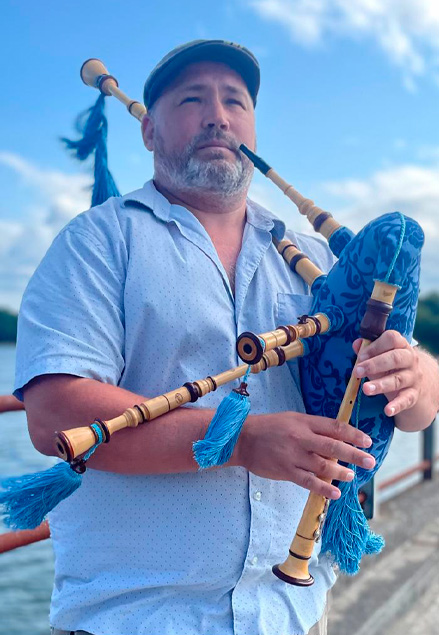
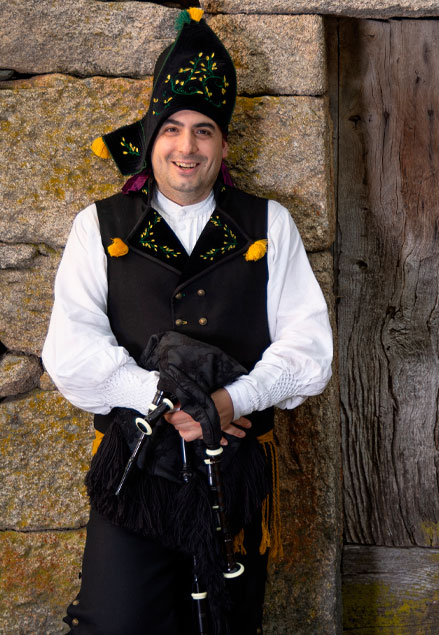
Diego Prieto
Multi-award-winning bagpiper and bagpipe teacher in different groups, he founded his own school in Ourense, Tradigaita, which has the same name as his successful YouTube channel.
I suppose my case is common to many bagpipers. When you are a child and your first Seivane bagpipe comes into your hands, you are not aware of what you really have. That feeling that everything is much easier is the first thing that comes to my mind when I remember that moment. Luckily, as the years go by and as one improves, one becomes aware that Seivane bagpipes are much more than just bagpipes: quality, reliability, evolution, precision, perfect tuning and an unique timbre that make very easy to get the most out of the instrument in any circumstance and environment, no matter how demanding they may be.
That is why talking about Seivane gaitas is not only talking about a career of more than 80 years dedicated to the world of gaitas, but is also synonymous with respect for tradition, evolution, commitment and, above all, listening and converting also in their worries the worries of the bagpipers with which we go to the workshop.
Finally, I cannot finish these words without expressing my most sincere gratitude to the entire team that makes up the Obradoiro de Gaitas Seivane for making me feel at home every time I visit the workshop and for passing on the passion they feel for the gaita.
MIGUEL RAMALLEIRA
Gaiteiro, director and teacher at the centenary Group Rosalía de Castro in Madrid and at the Galician Center of Madrid, Móstoles and Burgos.
Back in 2008, walking with my parents through the center of Madrid, we saw the Galician Center and the same day they told me: Wouldn’t you like to learn to play the gaita, Miguel? From that day to the present, I remain in love with this wonderful instrument.
I began my journey with Daniel Bellón, he being the person who taught me both to be a bagpiper and to be a musician. Through his guidance he led me to meet the Seivane family. Going to Obradoiro Seivane is like going home, the treatment and kindness of everyone makes you stay in a cozy and familiar place.
In 2009 I finally had my first gaita, a gift from my grandfather and my parents. I still remember as if it were yesterday, the feeling I had the first time I played it, that was where I realized the quality and love they put into making all their instruments. Of their bagpipes, I would say that they are the current version 2.0, they offer quality in their sound and a great advance in their structure and development, with a finish totally adapted to the person. The versatility and studies carried out to create the different gaitas in their catalog make them a reference for all of us who play the gaita. For me and mine they have always been of great help, they make playing the bagpipe more comfortable and precise in tuning, thanks to their wonderful creation, the Seitor.
I am currently a teacher at the Galician Centers of Madrid, Móstoles and Burgos, and director of the bagpipes band of the Rosalía de Castro Galician Artistic Group of the Galician Center of Madrid, where more than half of the students have Seivane gaitas.
Thank you for all these years of friendship and profession.
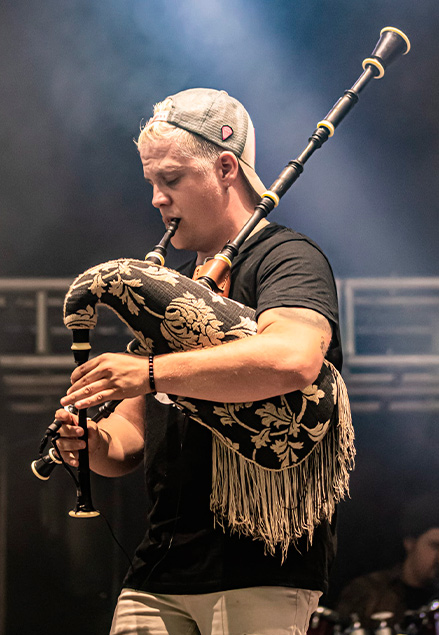
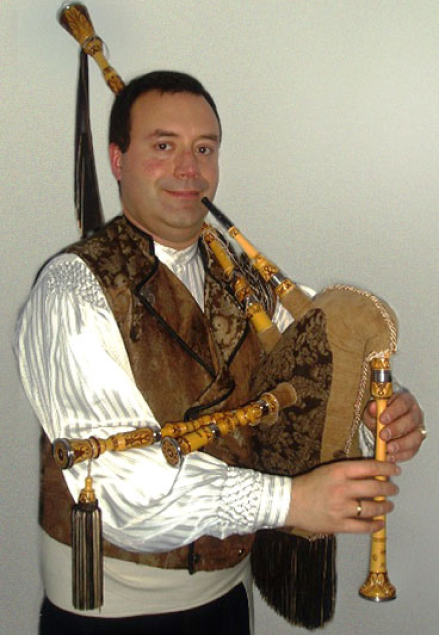
Xoán Carlos Rilo Fraga
Gaiteiro master from AGADIC and collaborator musician in several musical groups.
I remember the 1984 summer holidays, when I went with my father to visit Don Xosé Seivane’s workshop in Ribeira de Piquín. It was there that for the first time I saw hand-carved gaitas, and gaitas with incrustations… something completely new for me, which gave me a pleasant surprise. Tempted by my feelings, I could not resist playing them and immediately ordering my first two granadillo gaitas in C. Hearing their sweetness and brilliance was a wonderful experience and consequently a great success when we played in the Galician centres in the Basque Country, places we frequented when we lived in that part of Spain.
I know that many of the pupils in Bilbao, Llodio, Pamplona… and later in Galicia (Oza-Cesuras, Curtis…) did not hesitate to buy gaitas made in the Seivane workshop, and I never heard a complaint. Without a doubt, a gaita made by them is the synonym of exquisite, guaranteed quality. With justified logic, we gaiteiros identify the surname Seivane with the hallmark and the very surname of the gaita.
On the professional level, I consider myself privileged to have the gaita as the tool with which I work. If I add to this the fact that all the gaitas I use (low F, G, B flat, C, D and high F) were made in the Seivane workshop, I achieve the degree of tranquillity, trustworthiness, stability and versatility that is necessary to play with the required security.
Fortunately, there are now great musicians who know and master gaita technique, but we must not overlook the worth of the magnificent artisans who work daily to improve and dignify our most representative wind instrument, turning it into an important instrument of the first order.
Congratulations to the Seivane family and, on the personal level, many thanks for the hospitality and friendliness with which you have always treated me. Long life!
Agustín Sánchez Iglesias
Award-winning gaiteiro, composer and bagpipe teacher.
Without doubt, one of the main reasons I endorse Seivane gaitas is their distinctive sound quality. As far back as I can recall, I have always been impressed by their cohesive, clear sound and above all how this is balanced with the other sonorous elements that make up this instrument. From my perspective, this is one of the hardest things to achieve.
But to speak of Seivane gaitas is not speaking of just a unique sound, but also of their reliability, the excellence of their wood, a guarantee of quality and of course, innovation. The contribution from this family of artisans to our bagpipe are many, born of their time spent on investigating and improving an instrument that is rapidly moving us away the popular myth of suspicion and limitations in its tuning. Some of their most recent big achievements, such as Seipal or Seitor, have a great deal of value in terms of tuning stability and practicality when it comes to corrections in tuning, something which until recently had merely been a dream for bagpipers.
These great accomplishments, as well as other details, make me feel comfortable and secure with an instrument that more than covers my requirements as a musician, as well as those of the many new generation bagpipers. For me, comfort and reliability are two indispensable qualities in an instrument that I consider an extension of myself and without which, I would never be able to achieve what I want to express with music.
Thanks to the Seivane family for your attention to, love of and dedication to this great instrument.
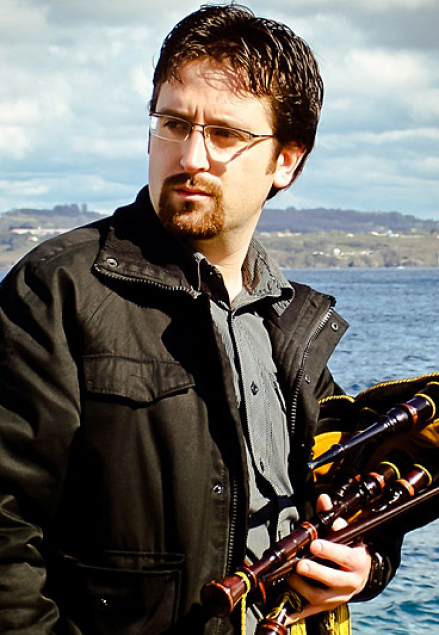
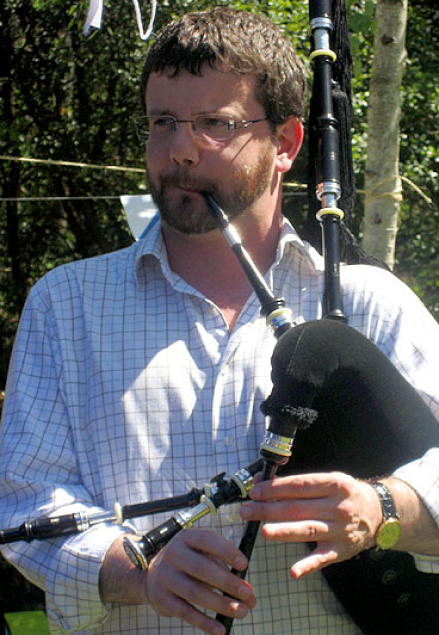
Xosé Manuel Sánchez Rei
Gaiteiro and professor in the Galician and Portuguese Philology Area of the University of A Coruña. Author of several works on Galician-Portuguese grammar and linguistics and the book about our patriarch: Xosé Seivane. A gaita con maiúscula (2019).
Transforming a piece of wood into a musical instrument is not an easy task. The whole construction process is shaped by the way the wood is selected, dried, cared for, prepared, drilled, etc., with each variation along the way reflected in the distinctive end result. Turning wood (in this case boxwood, granadilla, cocobolo or lignum vitae) into the musical soul of a nation is a far more complex undertaking, of which only a handful of craftspeople are capable. Gaitas Seivane, founded at the Terra Chá in Lugo in 1939, is one of the few. The work begun by Xosé Seivane continues today in As Mariñas (A Coruña) where now it is Xosé’s sons, Álvaro and Xosé Manuel, who have taken on the challenge of uniting the sound of each set of pipes to the musical soul of Galiza.
Galician bagpipes that carry the Seivane emblem have a number of special qualities and features which, in my opinion, help to make these instruments unique. Firstly, the perfect synthesis between modern tuning methods and the natural scale of the ancient pipes, allowing a Seivane gaita to play alongside a range of different instruments, whilst preserving the authenticity of its original acoustics. Secondly, the unmistakable pitch that all Seivane-crafted pipes have. Thirdly, admirably and quite exceptionally among Galician pipe crafters, the fact that Seivane gaitas can be played in a number of different ways, leaving the piper free to change finger position as and when he or she chooses. Fourthly and in keeping with the traditional design of the gaita, the bag is comfortable to hold, thus saving pipers from that inelegant (but often necessary) turn of the head, or the bad habit of not holding the air compartment properly. Another characteristic feature is the exquisite internal and external finish of the wood, where even the tiniest detail becomes a distinguishing ornament. Each gaita produced by Seivane is, moreover, personalised to suit its owner’s aesthetic and acoustic preferences: for example the bagpipe adaptation to each person to make it more comfortable for the piper; the sonorous flexibility that allows the chanter to be hardened, in order to produce a stronger sound without compromising the tuning quality or pitch of the instrument and so on. Lastly, but by no means least, it is the fundamental Galician nature of Seivane gaitas, which whilst subject to constant investigation and development, helps to provide identifying features of the structure, acoustics and pitch of the instrument.
In conclusion, a Seivane instrument allows us to hear the centuries-old musical essence of our heritage. It is capable of taking us back to another era, at the hands of 21st-century modern artisanship and to make us living witnesses of the people and landscapes of Galiza, reaching far beyond local or family gatherings to the most exclusive theatres and stages in the world.
Alberte Sanmartín Montaña
Gaiteiro from Barakaldo, Galician gaita teacher and musician in various groups.
To speak of a Seivane bagpipe is without a doubt, to speak of a top quality musical instrument. Its reliability and steadiness for tuning, its sweet sound and its balance and chromatics make it easy to tune with other bagpipes, other musical instruments of different families, and moreover, delivers a quick response to sudden changes in weather.
If we also add superb customer care, huge empathy with the musician, a long tradition of craftsmanship and a firm commitment to innovation and the future…What more could you ask for? Seivane is a life-long pledge.
I stand by Seivane!
A big hug!

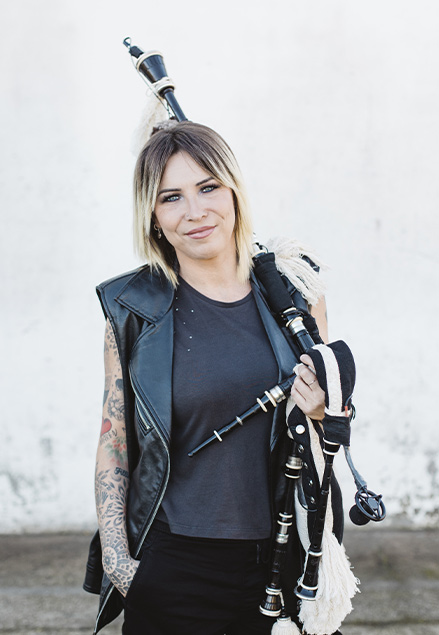
Susana Seivane
Gaiteira and multi-instrumentalist, internationally recognized for her virtuosity and successful musical career, granddaughter of the founder and daughter of Álvaro Seivane.
Being born at the heart of the Seivane family, means that you are going to have contact with the gaita in some shape or form. Since I was little, they knew exactly how to pass on a whole philosophy of life, the love of our instruments, the passion for our culture and traditions.
I am truly very proud of them, of the fantastic work they have done, since my grandfather opened his first Obradoiro de Gaitas in 1939.
We spent every summer in Ribeira de Piquín, in the Chao de Pousadoiro. My cousin Jorge and I played the gaita around the village and that way began to earn our own money and sweets.
I remember that O Chao was always a place of pilgrimage for many male and female bagpipers who went to pick up their gaitas. Getting there was like an adventure along that stretch of road that was used as the last stage in the San Froilán Rally. I have always felt privileged to have had the source of knowledge at home. Great bagpipers and friends of the family would turn up there, such as Ricardo Portela, Moxenas, Milladoiro etc, with whom I have had contact since I was very young and have had the fortune of playing with, allowing me to become influenced by their way of understanding our traditions. Nowadays, I think they are the best gaita makers, not just because it is my family, but because since I was little, I understood that the objective was to take our instrument to the highest possible level and, with many years of effort and investigation, I think they have achieved this.
Pepe Temprano
(1940-2020)
One of the most popular and versatile gaiteiros in Galicia, a gaita teacher in different groups, he traveled the world with the gaita, a member of the group Os Tempranos de Eirís, among others.
It was well into the 1970’s, when, the individual writing these words, Pepe Temprano, along with the also bagpiper José Cardelle, were trying to find a gaita maker called Mr José Seivane, who had a small workshop in Ribeira de Piquín, in the province of Lugo, where he developed gaitas. Arriving at Meira, we asked about how to find him and I perfectly remember a very cautious gentleman telling us: “Drive slowly, you don’t want to be lifted using rope”, we were very surprised by these words. Later on we understood what he meant, it was due to the road being surrounded by cliff faces. What a wonderful place!
When we got to the workshop, there was Mr José Seivane, at the moment when I met him, making a hurdy gurdy for his own use, with his typical mastery and humility.
The gaitas made by this man have the harmonious colour of our Nation, something authentic! A sweetness comparable only with being in love. No more false notes! The difficulties in tuning have finished, thanks to the mastery mentioned earlier.
Galicia needed gaita makers of his quality because the gaitas made by Mr José speak Galician.
This dexterity, well demonstrated over so many years, continues to this day in the no less noteworthy hands of his sons, Álvaro and José, preservers of this great work, with the whole family having moved from the small workshop in Lugo to the area of Cambre in A Coruña, where, some years ago already, they built and have a great workshop known by everybody.
From a bagpiper’s point of view, I cannot fail to mention his niece, Susana Seivane, who has taken the sound of the gaita beyond the four walls of the family workshop as a world renowned bagpiper, showing that this family apply themselves in body and soul to the sound of Galicia that is the gaita.
The Seivane family form part of the history of Galicia like the Stradivarius or Amati families were in Italy, or in France the Laurent family etc.
I wish them the best from a great friend.
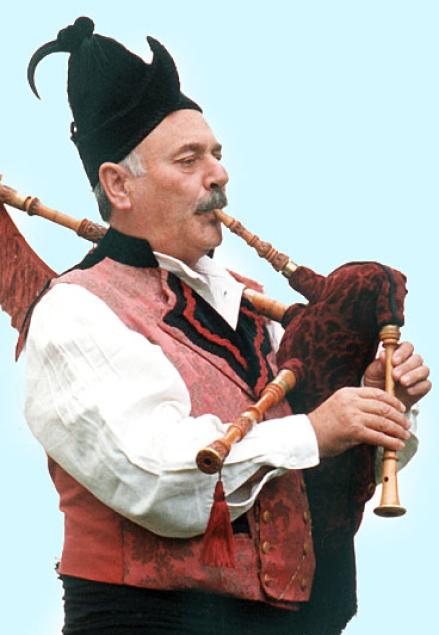
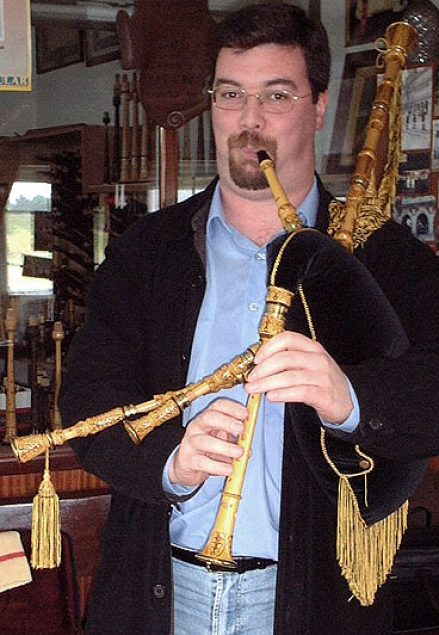
Xesús Vaamonde Manteiga
Gaiteiro, composer and gaita teacher.
I still remember that day in 1982. Two gaitas had arrived at the school, from some guy called ‘Seivane’, who they said was the best of the best at that time. I remember it as if it were in front of me now: Boxwood (that boxwood from those times), ringed in chromed alpaca and with a blue and white dressing. The bag was made of rubber, of course. Remember that we are talking about 1982.
How things have changed in the gaita world since that period, and, I think most of them were for the better! In around 1989 I met Álvaro and, some time later I met José, the patriarch and José, the brother. Great things came from this great friendship. Every time I went by the workshop, they showed me a chanter that had one thing, a bag that had another thing, we spoke about materials, looks…
I think that this is why and, for many other reasons, the Seivane family will always be at the tip of the iceberg when it comes to gaita craftsmen in Galicia. It is because they know how to listen and they ask, they appreciate any opinion and suggestion that one may make to them. But the thing is that they still do it now, after all these years of making among the best gaitas that can be made in Galicia.
Xaquín Xesteira Losada
Prestigious gaiteiro de Treixadura, Sondeseu, Os Xesteira and ETRAD Municipal School of Vigo, among others.
A bagpiper, musician and artist; always looks, with his inseparable ally, the gaita, to move, to stir, to touch, to provoke different feelings in people.
When I was a boy, I was touched by the sounds that penetrated the peace of the morning from afar, the day of the fiesta, sounds that penetrated my heart and my thoughts, sounds of stone, or wood and cane, sounds that filled the streets of my village with harmonious emotions that morning, sounds that became feelings. Penetrating my inner mood in a grandiose way and, above all, that melodic harmony, at that moment personified by some bagpipers/artists that arrived from a parish in Vilagarcía, calling themselves ‘Os Campaneiros’.
During the numerous musical experiences I have gone through, both in infancy and adolescence, my interest has always been in trying to revive those feelings that I had stored within me. But I could not manage it, something was missing.
The gaita is an instrument that comes straight from the heart and comes with the three indisputable characteristics that is has: tuning, sonority and harmonious sound quality.
With the different gaitas made by different craftsmen that, throughout the years, I had been getting to know and use, they brought together almost two of the three essential characteristics, which I consider essential, of the gaita.
That third one, the colour or harmonious sound quality, was missing, that property which converted into sound causes a phenomenon. That colour which transforms the gaita into a magical instrument, which surrounds you. When walking down a cobbled street, it moves you to such an extent that your pulse quickens, you close your eyes and you remember that same feeling, that emotional colour that, as a boy, filled you with happiness.
The Seivane family have been able to unite the three great characteristics in the gaita with an insurmountable mastery, being those responsible, to a great extent, for the sound of the groups that I am part of.
In my journey through life as a bagpiper, there has been a crucial moment: When I came across the harmonious sound quality of the chanters that Xosé Seivane was making at that time in Ribeira de Piquín.
These are gaitas whose volume reminds me of those gaitas that I heard as a boy, that volume which is touching, which is stirring in a considerable way, provoking the feelings being felt inside to feed the soul at the same time and, therefore, reflect your outlook.
